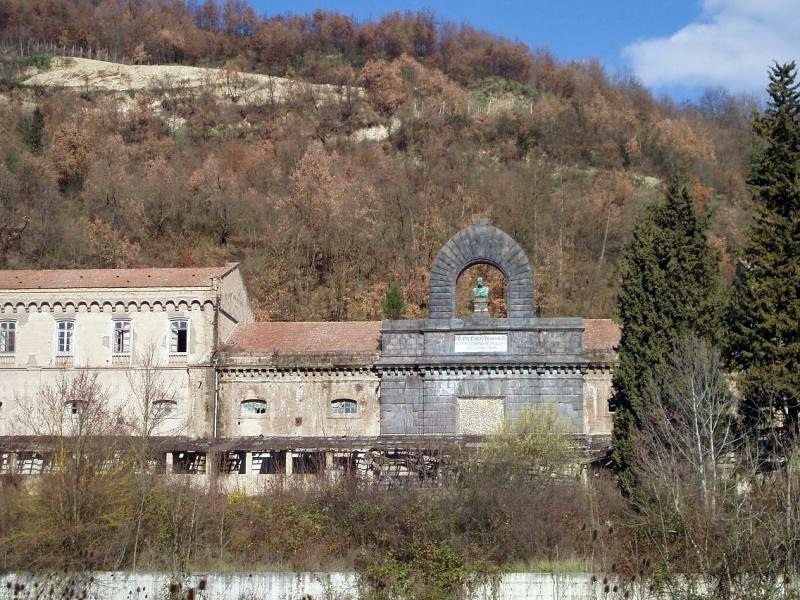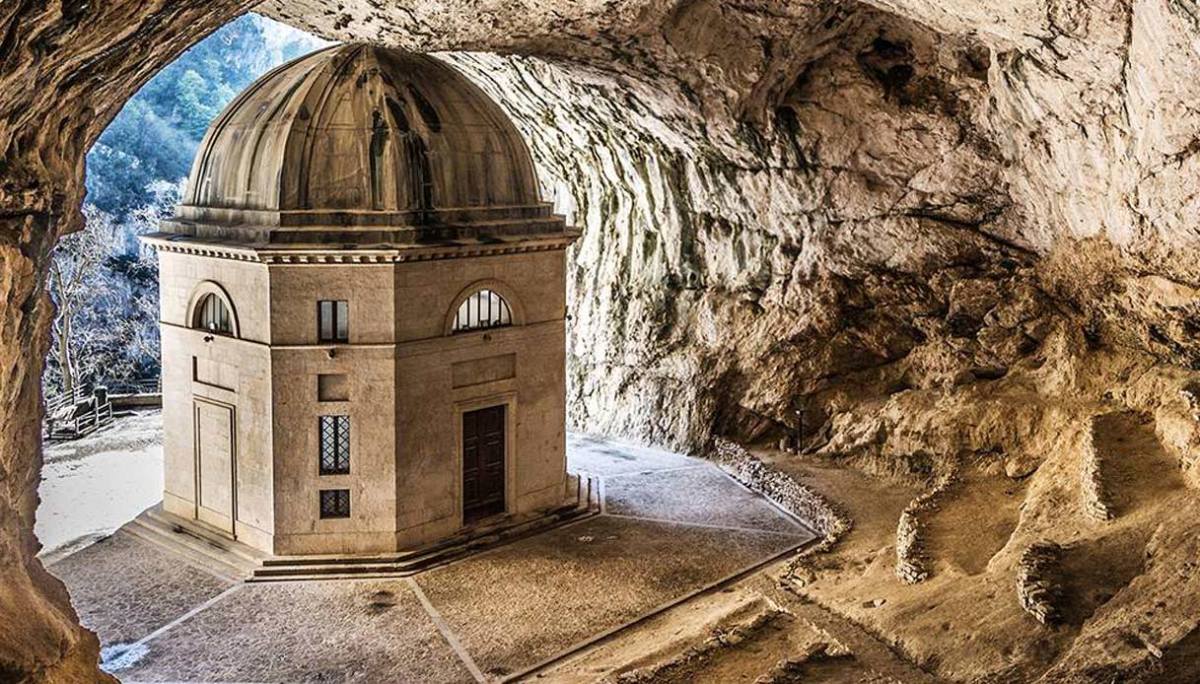It was the year 1866 when Mr. Francesco Di Marzo, legend has it, saw two shepherd boys setting fire to a stone.
The unusual fact distracted him from the pleasant walk of a provincial gentleman.
In Francesco the blood of entrepreneurship was aroused by both the sight and the smell of that strange phenomenon: sulfur!
As he dismounted from his horse, he became aware of the deposit, almost surfacing, that the river had patiently waited, for millions of years, to reveal to him, gnawing at the ancient sea bed in which the treasure was contained.
He was a sharp, decisive man, and he imagined a mine holding a "micca," – that’s what miners call it , in Italian it’s called ganga – that is, a grayish-yellow stone made of sulfur, gypsum and clay.
Thus over the years in Tufo A Tufo the Di Marzo family promoted not only industrial development but at the same time numerous social initiatives such as the cinematograph, kindergarten, and workers’ society, and with them also a new consciousness of rights and duties, civic sense and being a Social Organism was born; with the first school facilities people learned and came out of cultural and social isolation.
he sulfur mining deposit is on the right bank of the Sabato River an area geologically very different from the very near left bank.
Over here sandstones, puddinghe due to the action of rivers, and a few blocks of tuff due to ancient volcanic activity, over there the limestone massif of the Apennines raised on the ancient sea.
The mining area is very narrow almost as if billions of marine organisms had elected a fjord for their life and death: millennia and millennia of decaying organisms have derived sulfur, according to a complicated chemical-organic pattern, with progressive reductions from the most complex substances. The site is almost equidistant between the cities of Avellino and Benevento, and the presence of the river (once semi-navigable, as early machinery was brought through it) carried four consequences:
mining was advantaged by the centuries-old erosion due to the water that had caused ore to be outcropped at the top of the hill, which, in addition to favoring its discovery, meant that the first ore mining took place in the open;
the possibility of using river and tributary streams as labor power;ancient and pre-Roman road permeability (via Antiqua Maior)
the possibility of exploiting the gentle slope to equip the sites with a railroad to serve mining. The railway line was in fact contracted, in 1881, after long parliamentary battles by Hon. Donato Di Marzo.
The peasant culture was also always present in mine work to such an extent that the amount of sulfur extracted in a given working period was called a "crop," which generally ended around June each year with the sale of the refined product. In addition, as was natural, each person brought with him or her personal "know-how" from previous activity, thus contributing to the factual improvement, from within, of the organization of the Plant in the light of his or her experience.
That is: they would transfer their own craftsmanship to the Factory.
A tangible example was the Sulfur Processing Mill related to the Tufo Mine and known aptly as the "Mill-Garden": it was surrounded by greenery and completely integrated into its surroundings; within its walls were trees and gardens that made the work less burdensome and the air more breathable.
It was a completely self-sufficient structure, a veritable citadel where carpenters, blacksmiths, mechanics, sack preparers, and electricians worked.
The stuffed sacks were then weighed and transported, at first on the shoulders or head, to horse-drawn wagons, the "traìni" that came from neighboring provinces and Apulia; later the product was transported by rail and then by the first motorized vehicles; the railroad still connects Tufo and Altavilla with Avellino, Benevento, Naples and Salerno.
The market initially involved the towns gravitating around Tufo, and then expanded considerably, investing an area that included all of Campania.
The early 1900s and the railroad marked an improvement in personnel, then a considerable increase in production, the benefits of which were, however, totally neutralized by the ever-increasing costs resulting from the depth of excavation.
The market, however, was expanding, and sulfur was in demand mainly for pest and vine disease control.
The post-World War II period, in addition to union defenses and the enforcement of modern labor contracts, brought with it the seeds of crisis, because there was competition from American sulfur that was being mined at competitive costs. Then, for pollution reasons, oil refineries were forced to extract sulfur, which, being a by-product of oil refining, was obtained at very low cost, and so the competition began to be untenable.
From 1966 onward, the crisis began to be felt and, little by little, while still being able to exploit the mine, work began to decline and, in order not to lay anyone off, production gradually dropped; as staff retired they were not replaced.
The Tufo mines retained significant activity until the early 1960s, and mining continued until 1972. When operating at full capacity, the mine had employed nearly three hundred workers; it gradually dropped to seventy and then closed with seven workers, in 1983.













